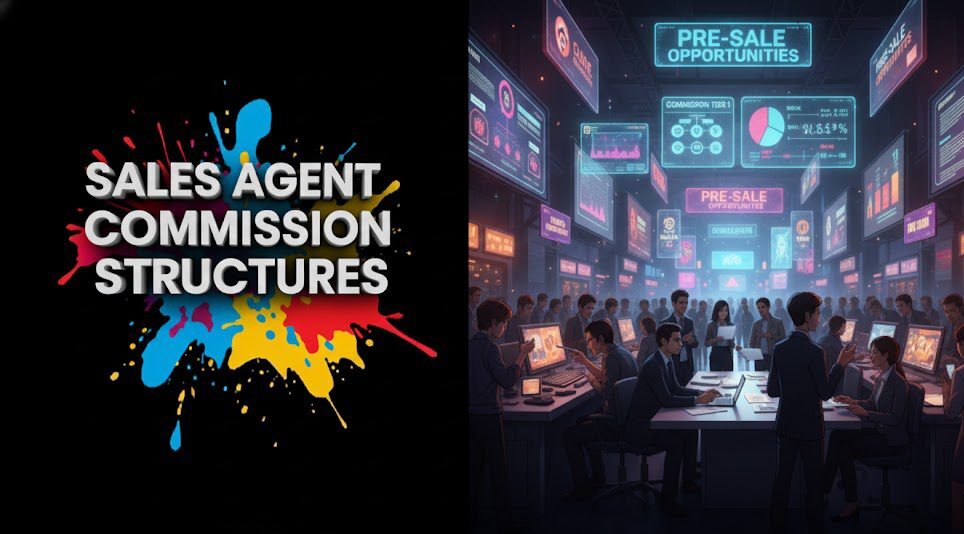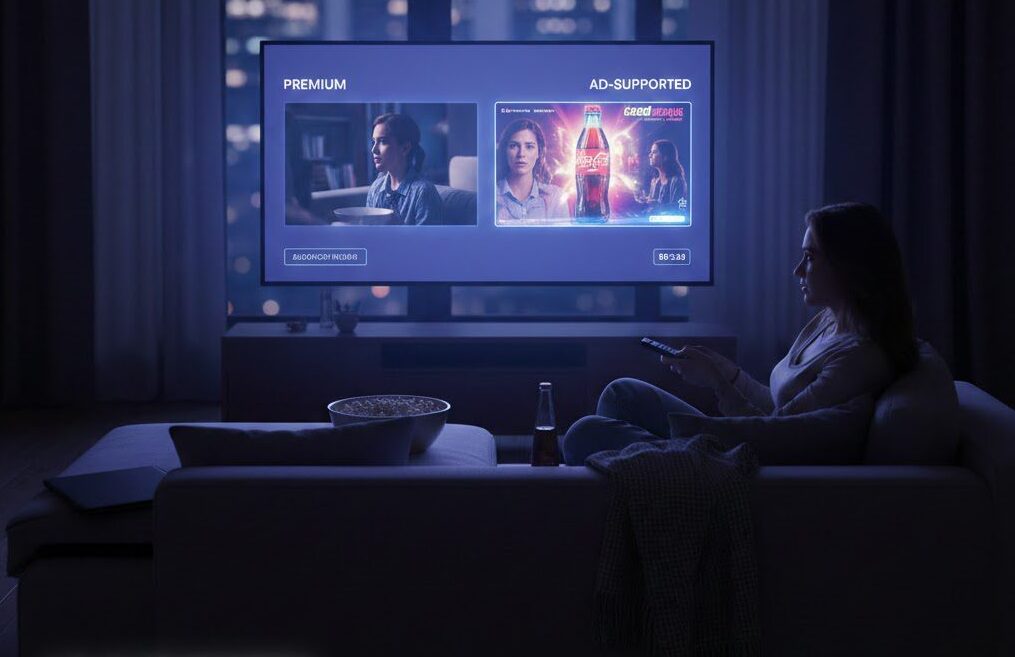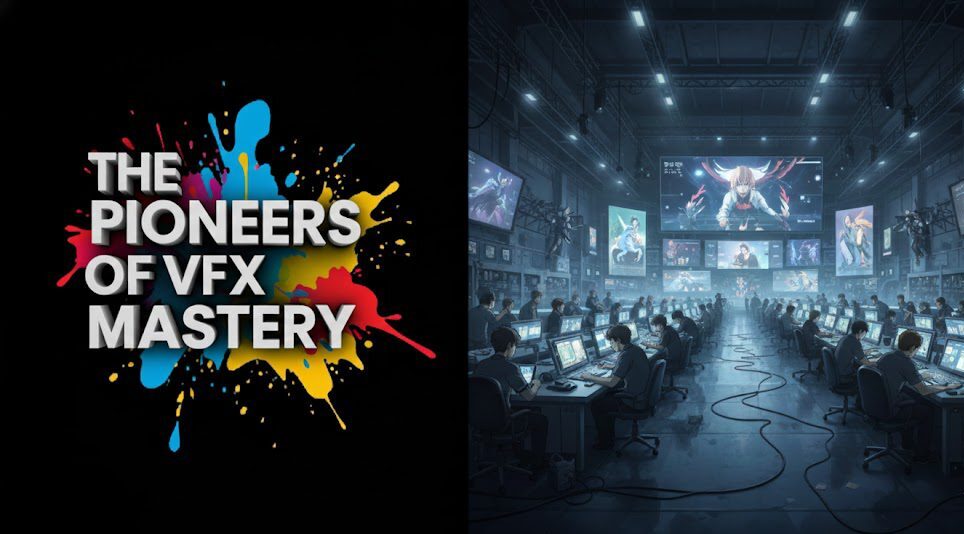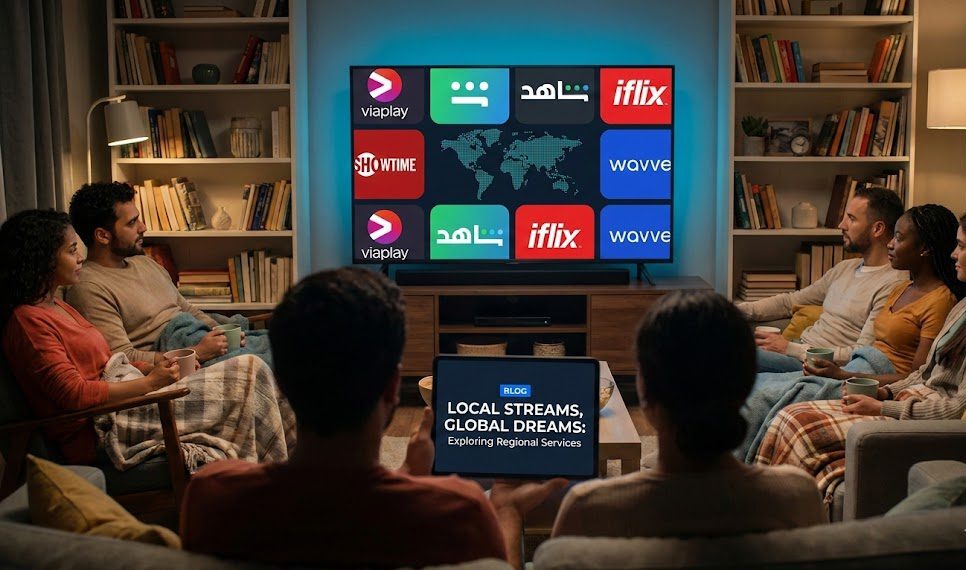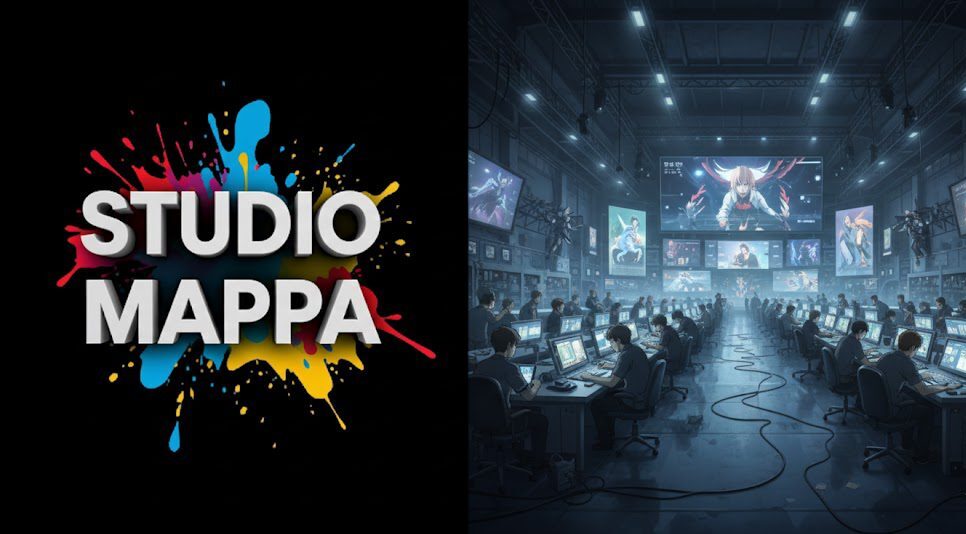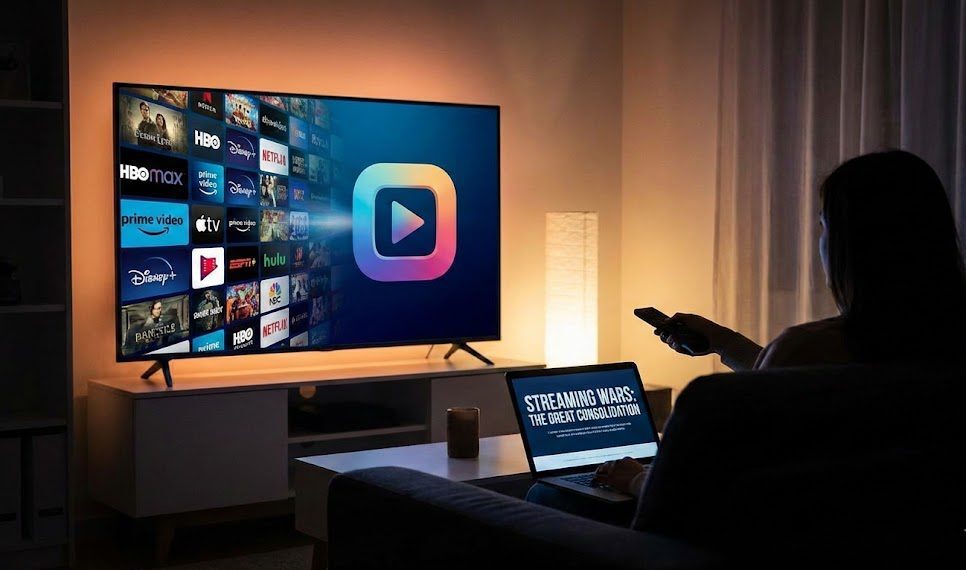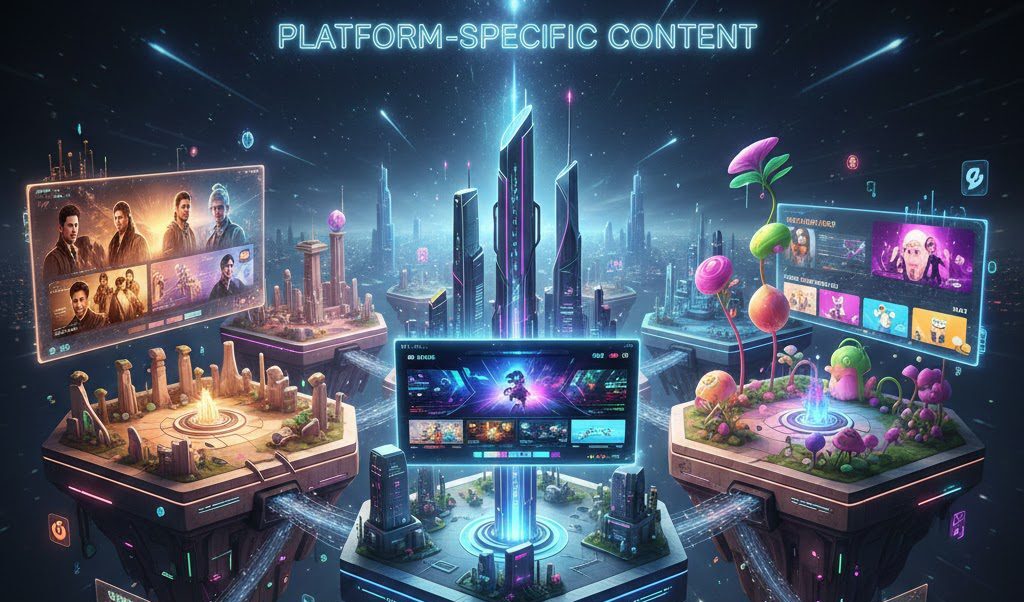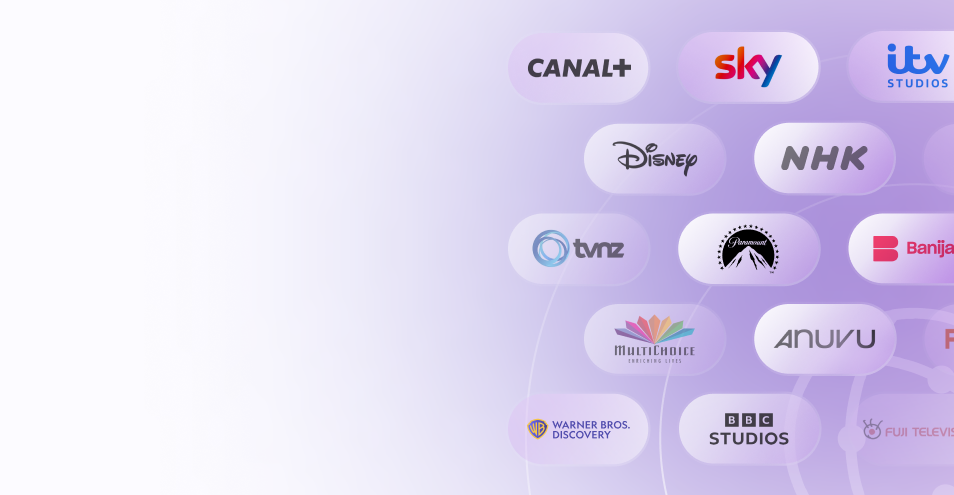Introduction
So, you’re a content acquirer or programmer looking to bring the magic of animation to your audience. Smart move! Animated content, from delightful kids’ shows to thought-provoking adult series and globally beloved films, is a powerful driver of viewership and engagement. But how exactly do you go about it? The process to license animated content involves several key steps, from identifying what your audience wants to negotiating the perfect deal. Whether you’re aiming to buy animation rights for a linear TV channel, secure animated series licensing for your SVOD service, or undertake kids animation acquisition for a dedicated platform, this guide will walk you through the essentials. We’ll cover how to source animated films and series and what to consider for your VOD animation strategy.
Table of content
- Introduction
- Key-Takeaways
- Step 1: Understanding Your Platform’s Animation Needs and Audience
- Step 2: Where and How to Source Animated Content Effectively
- Step 3: Key Criteria for Evaluating Animated Content for Licensing
- Step 4: Negotiating the Deal – Securing Animation Rights
- Step 5: The Licensing Agreement and Content Delivery
- Step 6: Launching and Programming Your Licensed Animation for Success
- Common Challenges for Buyers When Licensing Animation
- Conclusion
- FAQs
Key Takeaways
| Licensing Step | Core Action for Buyers | |
|---|---|---|
| Strategy & Audience | Define your target audience for animation and what types of animated content (genre, age group) will best serve them. | |
| Discovery & Sourcing | Actively source animated films and series through markets, distributors, and online platforms like Vitrina. | |
| Evaluation | Assess content for quality, audience fit, brand alignment, and potential ROI. | |
| Rights & Negotiation | Clearly define the rights needed (territory, window, exclusivity) and negotiate favorable terms to buy animation rights. | |
| Agreement & Delivery | Finalize the licensing agreement with legal counsel and ensure smooth delivery of materials. | |
| Launch & Promotion | Effectively market and schedule the licensed animated content to maximize viewership. | |
| Further Learning | For a comprehensive understanding, refer to our Ultimate Guide to Animated Content Licensing. | |
Need to Boost Your Platform with Kids' Animation or Anime?

Step 1: Understanding Your Platform’s Animation Needs and Audience
Before you even begin to license animated content, the foundational step is to deeply understand your platform’s specific needs and, most importantly, your target audience. What kind of animation will resonate with them? Are you catering to preschoolers, older kids, teens, families, or adults? Defining this clearly will guide your entire acquisition strategy, from the genres you target to the specific titles you pursue. This initial analysis is critical whether you’re focused on kids animation acquisition or sourcing edgier content for an adult-skewed VOD service.
Defining Your Target Audience for Animation:
- Age Group(s): Pre-school (2-5), Kids (6-11), Tweens/Teens (12-17), Young Adults (18-34), Adults, Family (co-viewing). Each group has distinct preferences.
- Content Preferences: What genres are popular with your target demographic (e.g., comedy, adventure, fantasy, educational, sci-fi for animation)?
- Platform Nature: Is your platform a dedicated kids’ channel, a general entertainment streaming service, a niche OTT app? This will shape the type of VOD animation or broadcast content you need.
- Brand Alignment: Does the tone and style of the animation fit your platform’s overall brand and values? For instance, a platform focused on educational content will look for different animation than one focused on action-comedy.
- Competitive Analysis: What animated content are your direct competitors offering? How can you differentiate your slate?
Setting Your Acquisition Goals:
Based on your audience and platform needs, set clear goals for your animation acquisition:
- Are you looking for flagship exclusive titles to drive subscriptions?
- Do you need a volume of library content to fill out a specific genre category?
- Are you trying to attract a new demographic segment with specific types of animation?
- What’s your budget allocation for animated content?
Answering these questions will help you focus your efforts to license animated content effectively.
| Audience Factor | Key Question for Buyer | Impact on Licensing Strategy |
|---|---|---|
| Target Age Group | Which age demographic are we primarily serving? | Determines genre, themes, and complexity of animation sought. |
| Platform Brand | What kind of content aligns with our channel/service identity? | Ensures acquired animation reinforces brand messaging. |
| Content Gaps | What types of animation are currently missing from our library? | Guides sourcing efforts to fill specific programming needs. |
Step 2: Where and How to Source Animated Content Effectively
Once you have a clear idea of what kind of animation you need, the next step is to actively source animated films and series. The global animation market is vast, with content available from major studios, independent producers, and international distributors. Employing a multi-channel sourcing strategy will increase your chances of finding high-quality, relevant animation that fits your budget and platform requirements. Knowing where to look is key when you want to buy animation rights.
Key Channels for Sourcing Animation:
- Animation-Specific Markets & Festivals:
- Annecy International Animation Film Market (MIFA): A premier global market for animation.
- Kidscreen Summit: Focuses on children’s entertainment, including a lot of animation.
- MIPJunior (part of MIPCOM): Dedicated to kids’ programming, a major hub for kids animation acquisition.
- Other general content markets like MIPCOM and Berlinale EFM also feature significant animation catalogs.
- Specialized Animation Distributors & Sales Agents: Many companies focus exclusively on distributing animated content. Building relationships with these specialists can provide access to curated catalogs and upcoming projects.
- Direct Outreach to Animation Studios: For specific needs or potential co-production opportunities, reaching out directly to animation production studios (both large and independent) can be fruitful.
- Online B2B Content Marketplaces: Platforms like Vitrina are transforming how buyers license animated content. These marketplaces offer:
- Extensive, searchable databases of global animated content.
- Filters for genre, target age, rights availability, territory, language, etc.
- Direct connection with rights holders.
- Access to screeners and detailed content information.
This is an increasingly efficient way to manage VOD animation sourcing.
Tips for Effective Sourcing:
- Be Proactive: Don’t just wait for content to come to you. Actively research and seek out new animation.
- Network: Build and maintain relationships with producers, distributors, and sales agents in the animation sector.
- Stay Informed: Keep up with industry news, animation trends, and festival award winners.
| Sourcing Channel | Pros for Animation Buyers | Cons for Animation Buyers |
|---|---|---|
| Animation Markets/Festivals | See new projects, meet creators/distributors, industry buzz. | Can be expensive and time-consuming. |
| Specialized Distributors | Curated animation catalogs, genre expertise. | May have limited scope compared to broader marketplaces. |
| Online Marketplaces (e.g., Vitrina) | Efficient global search, diverse content, direct connections. | Requires active platform engagement to maximize benefits. |
Step 3: Key Criteria for Evaluating Animated Content for Licensing
Finding potential animated content is just the start; the crucial next phase when you aim to license animated content is thorough evaluation. This involves more than just personal taste. You need to assess each film or series against a set of objective and strategic criteria to determine its suitability for your platform, its appeal to your target audience, and its potential return on investment. A rigorous evaluation process is essential before you decide to buy animation rights for any title, whether it’s for a broad audience or niche VOD animation.
Critical Evaluation Factors:
- Story and Script Quality:
- Is the narrative engaging, original, and well-paced?
- Are the characters relatable, memorable, and well-developed?
- For kids’ content, does it have positive messaging or educational value if appropriate?
- Is the dialogue natural and age-appropriate?
- Animation Quality and Style:
- What is the overall visual appeal and technical proficiency of the animation (2D, 3D, stop-motion, etc.)?
- Does the art style align with your platform’s aesthetic and target audience’s preferences? (e.g., vibrant and colorful for pre-schoolers, more sophisticated for adult animation).
- Audience Fit and Appeal:
- Does it clearly target your desired demographic?
- Does it fill a specific content need or genre gap on your platform?
- Is there evidence of existing appeal (e.g., festival awards, online buzz, success in other territories)?
- Brand Safety and Compliance (Especially for Kids):
- Does the content meet all relevant broadcast standards and child safety regulations in your territory?
- Are there any potentially problematic themes, language, or visuals? This is paramount for kids animation acquisition.
- Longevity and Re-watchability (Evergreen Potential):
- Does the content have themes or stories that will remain relevant over time?
- Is it something viewers might want to watch multiple times (important for SVOD retention)?
- Availability of Materials:
- Are high-quality master files, M&E tracks (for dubbing), scripts, and marketing assets readily available?
- Are existing dubbed or subtitled versions available for your required languages?
- Financial Viability: Does the asking license fee align with your budget and the content’s perceived value and potential ROI?
Careful assessment during the animated series licensing process can prevent costly mistakes.
| Evaluation Criteria | Why It’s Important for Animation | Example Question |
|---|---|---|
| Story & Characters | Core of engagement for all age groups. | Are the characters memorable and are their motivations clear? |
| Animation Style & Quality | Visual appeal is key, especially for younger audiences. | Is the animation fluid and technically well-executed for its style? |
| Audience & Platform Fit | Ensures content resonates and meets strategic needs. | Will our pre-school audience understand and enjoy this show? |
| Brand Safety (Kids) | Crucial for protecting young viewers and platform reputation. | Does this meet all local advertising and content guidelines for children? |
Want to Secure the Best Animation Rights for Your Audience?

Step 4: Negotiating the Deal – Securing Animation Rights
Once you’ve identified and evaluated animated content that you believe is a great fit for your platform, the next crucial step is negotiating the licensing deal. This is where you, as the buyer, work with the rights holder (licensor) to agree on the specific terms under which you can license animated content. Effective negotiation involves not just the price, but also the scope of rights, exclusivity, duration, and other critical elements. The goal is to secure the animation rights you need on terms that are financially viable and strategically advantageous for your TV channel, streaming service, or OTT platform.
Key Negotiation Points for Animation Buyers:
- License Fee/Financial Model:
- Determine a budget based on the content’s perceived value, potential ROI, and comparable deals.
- Negotiate for a flat fee, a Minimum Guarantee (MG) against revenue share, or a pure revenue share, depending on the content and your risk appetite.
- Clarify payment schedules and currency.
- Scope of Rights:
- Platforms: Be specific (SVOD, AVOD, Linear TV, TVOD, mobile, etc.).
- Territory: Clearly define the geographical region(s).
- Languages: Specify rights for original language, dubbed versions, and subtitled versions. If dubbing/subtitling is needed, who bears the cost?
- License Term (Duration):
- How long do you need the rights for? Consider a term that allows you to maximize viewership.
- Negotiate renewal options, ideally with pre-agreed or capped fee increases. This is important for successful animated series licensing.
- Exclusivity:
- Is exclusivity critical for this title on your platform in your territory? Exclusive rights cost more but can be a key differentiator.
- Define the scope and duration of any exclusivity very clearly.
- Stacking Rights (for series): The ability to offer multiple past episodes or seasons on-demand is highly valuable for viewer engagement. Negotiate the extent of these rights.
- Delivery & Technical Specifications: Agree on the format of master materials, M&E tracks, scripts, artwork, and delivery timelines.
- Marketing & Promotion: Clarify any marketing support or assets to be provided by the licensor, and any promotional commitments from your side.
These details are vital when you buy animation rights.
| Negotiable Term | Buyer’s Objective | Potential Seller’s Stance |
|---|---|---|
| License Fee | Secure best possible price within budget. | Maximize upfront revenue or potential share. |
| Exclusivity | Obtain exclusivity if strategically important. | Grant exclusivity for a premium; prefer non-exclusive for wider reach. |
| Term Length & Renewals | Secure long enough term with favorable renewal options. | Balance term length with future re-licensing opportunities. |
| Stacking Rights (Series) | Acquire broad stacking rights for binge-ability. | May limit stacking to protect other windows or charge more. |
Step 5: The Licensing Agreement and Content Delivery
After successful negotiations, the terms agreed upon to license animated content are formalized in a legally binding document – the content licensing agreement. This is a critical stage where attention to detail is paramount. Simultaneously, arrangements for the physical or digital delivery of the animated content materials must be made. Both aspects require careful management to ensure a smooth transition from deal-making to actually having the content ready for your platform. This ensures the animation rights you’ve secured are properly documented and the content usable.
The Content Licensing Agreement for Animation:
Even if a term sheet was agreed earlier, the long-form agreement will be much more detailed. As a buyer, ensure your legal counsel reviews it thoroughly, paying attention to:
- Precise Grant of Rights: Verifying that all negotiated rights (platforms, territory, term, exclusivity, languages, stacking for animated series licensing) are accurately reflected.
- Payment Terms: Ensuring amounts, schedules, and any revenue share/royalty calculations are clear.
- Warranties and Indemnities: Confirming the licensor warrants they own all necessary rights (including underlying IP like music in the animation) and will indemnify you against third-party claims.
- Delivery Specifications: Clearly outlining the technical format of all materials to be delivered.
- Termination Clauses: Understanding the conditions under which the agreement can be terminated by either party.
- Approval and Consultation Rights: Any rights you may have regarding marketing materials or localization efforts.
Content Delivery and Technical QC:
Once the agreement is signed:
- Seller Delivers Materials: The licensor will provide the master video files, separate audio tracks (including M&E for dubbing), scripts, artwork, and any other agreed assets.
- Buyer Conducts Technical QC: Your technical team must thoroughly check all received materials to ensure they meet the specifications outlined in the agreement and are of broadcast/streaming quality. Any issues should be reported to the licensor promptly.
- Ingestion and Preparation: Once QC is passed, the content is ingested into your platform’s systems and prepared for launch (e.g., transcoding, adding metadata, creating any necessary dubbed/subtitled versions if you are responsible for them).
Smooth delivery is essential to meet your planned schedule for the VOD animation or broadcast.
| Process Step | Buyer’s Key Focus | Importance |
|---|---|---|
| Agreement Review | Ensuring all negotiated terms are accurately and clearly documented. | Legal protection, clarity on rights and obligations. |
| Technical QC of Delivered Materials | Verifying master files meet quality and format specifications. | Ensures content is usable and meets platform standards. |
Step 6: Launching and Programming Your Licensed Animation for Success
You’ve successfully managed to license animated content, the agreements are signed, and the materials are delivered. Now it’s time for the exciting part: launching the animation on your TV channel, streaming service, or OTT platform and ensuring it reaches your target audience effectively. This stage involves strategic programming, effective marketing and promotion, and ongoing performance monitoring to maximize the value of your acquired animation rights and delight your viewers, whether it’s freshly sourced kids animation acquisition or a library of classic VOD animation.
Strategic Programming and Scheduling:
- Placement: Where will the animated content sit within your overall offering? Is it a flagship title, part of a themed collection, or filling a specific genre slot?
- Scheduling (for Linear TV): If for a TV channel, what time slots are most appropriate for the target audience of the animation (e.g., morning/afternoon for kids, primetime for family films, late night for adult animation)?
- On-Platform Promotion: How will you feature the new animated content within your streaming service or app to ensure discoverability (e.g., homepage banners, “New Arrivals” sections, curated carousels)?
- Thematic Curation: Consider grouping animated content by themes, holidays, or genres to encourage deeper engagement (e.g., “Spooky Halloween Cartoons,” “Animated Adventures Around the World”).
Marketing and Promotion:
- Leverage Available Assets: Use trailers, key art, and other promotional materials provided by the licensor.
- Targeted Campaigns: Develop marketing campaigns aimed at the specific audience for the animation.
- Cross-Promotion: Promote the new animated content across your other channels and social media platforms.
- Partnerships: Consider co-promotional opportunities if appropriate.
Monitoring Performance and Gathering Insights:
- Track Viewership Data: Monitor how the licensed animated content is performing in terms of views, completion rates, and audience engagement.
- Gather Audience Feedback: Pay attention to comments, reviews, and social media sentiment.
- Refine Strategy: Use performance data and feedback to inform future animated series licensing decisions and programming choices.
This ongoing analysis is key to a successful long-term strategy to license animated content.
| Launch Aspect | Key Consideration for Buyer | Goal |
|---|---|---|
| Programming/Scheduling | Optimal placement and timing to reach target audience. | Maximize initial viewership and discoverability. |
| Marketing & Promotion | Creating awareness and excitement for the new content. | Drive tune-in and engagement. |
| Performance Analysis | Understanding audience response and ROI. | Inform future acquisition and programming decisions. |
Common Challenges for Buyers When Licensing Animation
While the opportunity to license animated content is exciting, buyers can face several challenges along the way. Being aware of these potential hurdles can help you prepare and navigate the process more effectively, whether you’re experienced in kids animation acquisition or new to sourcing VOD animation.
- Finding High-Quality, Relevant Content: With so much animation produced globally, sifting through to find titles that are a perfect fit for your specific audience and budget can be time-consuming. This is where platforms like Vitrina can significantly help by streamlining discovery.
- Complex Rights and Clearances: Animation, especially older titles or those with extensive music, can have complicated underlying rights (e.g., music, literary adaptations). Ensuring a clear chain of title is crucial but can be challenging.
- Managing Localization Costs and Quality: If content needs to be dubbed or subtitled into multiple languages, managing the cost and ensuring the quality of these localizations can be a significant undertaking.
- Meeting Minimum Guarantees (MGs) for Premium Content: High-demand animated properties often come with substantial MGs, which can be a risk if the content doesn’t perform as expected.
- Keeping Up with Rapidly Changing Trends: Animation trends, especially in kids’ content, can change quickly. Staying ahead of what audiences want requires constant market monitoring.
Conclusion
Successfully navigating the process to license animated content requires a strategic blend of audience understanding, effective sourcing, diligent evaluation, skillful negotiation, and robust post-acquisition management. Whether your goal is to buy animation rights for a beloved classic, secure cutting-edge VOD animation, or embark on a large-scale kids animation acquisition, following these steps will put you on the path to building a compelling and engaging animated content slate for your TV channel, streaming service, or OTT platform. The world of animation is rich and diverse, offering incredible opportunities to connect with viewers of all ages.
Remember, platforms like Vitrina are designed to simplify many of these steps, particularly in the discovery and connection phases, making it easier than ever to source animated films and series from around the globe. For a broader understanding of the entire licensing ecosystem, including aspects relevant to sellers and the business of animation, do explore our Ultimate Guide to Animated Content Licensing.
Ready to find captivating animated content for your platform? Explore Vitrina‘s global marketplace to discover and license a world of animation today!
Frequently Asked Questions
Define your target audience and the type of animation that would appeal to them. Then, identify your budget and the specific rights you’ll need (territory, platforms, term). This forms the basis of your content acquisition strategy.
Costs vary wildly based on the animation’s popularity, quality, age, the scope of rights being licensed (exclusivity, territory, term), and whether it’s a feature film, a full series, or shorts. Big franchises command top dollar, while library or niche content can be more affordable. There’s no standard price for animated series licensing or films.
Some text
An M&E (Music and Effects) track is a version of the audio mix that has all the music and sound effects but no dialogue. It’s essential if you plan to dub the animated content into another language, as it allows you to layer the new language dialogue over the existing music and effects seamlessly.




























